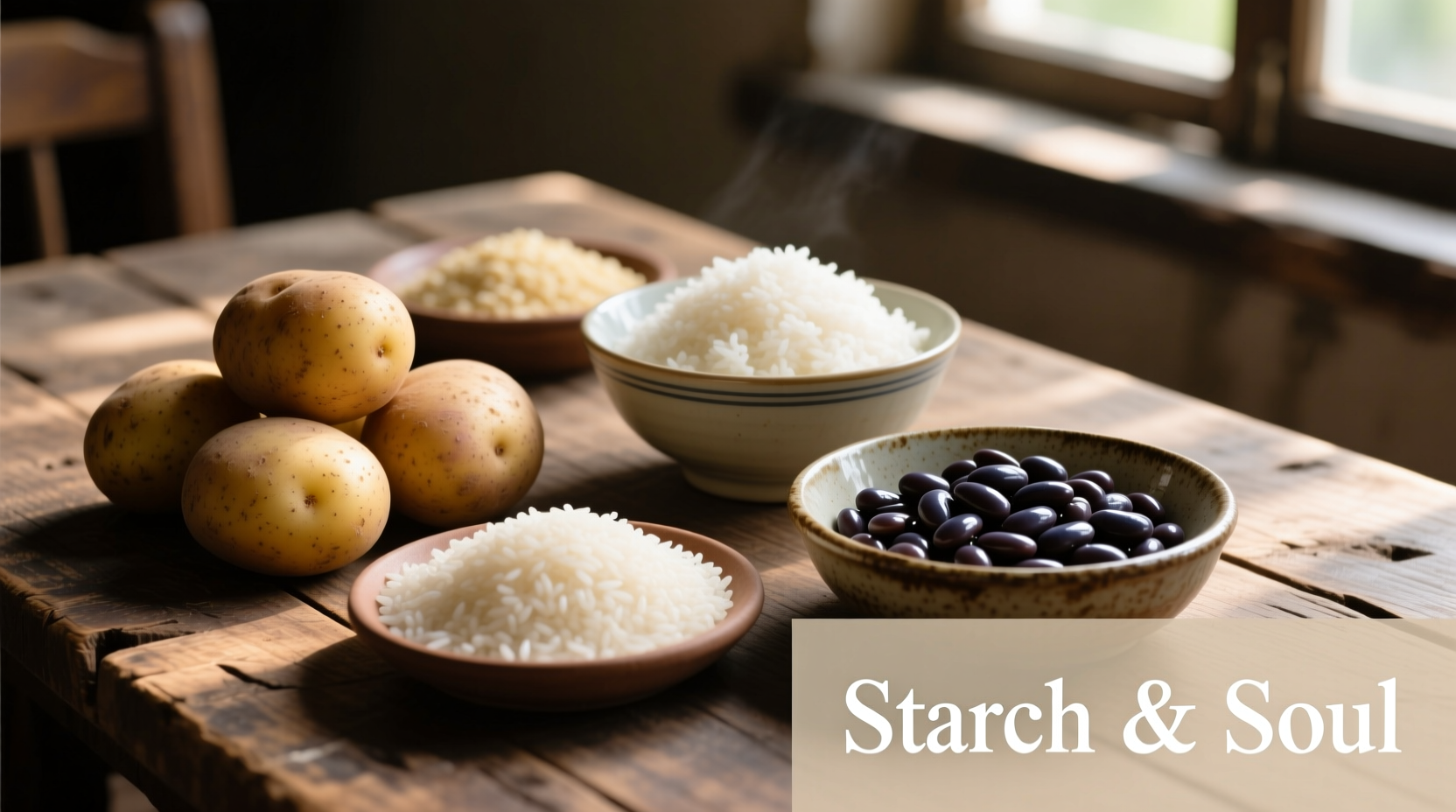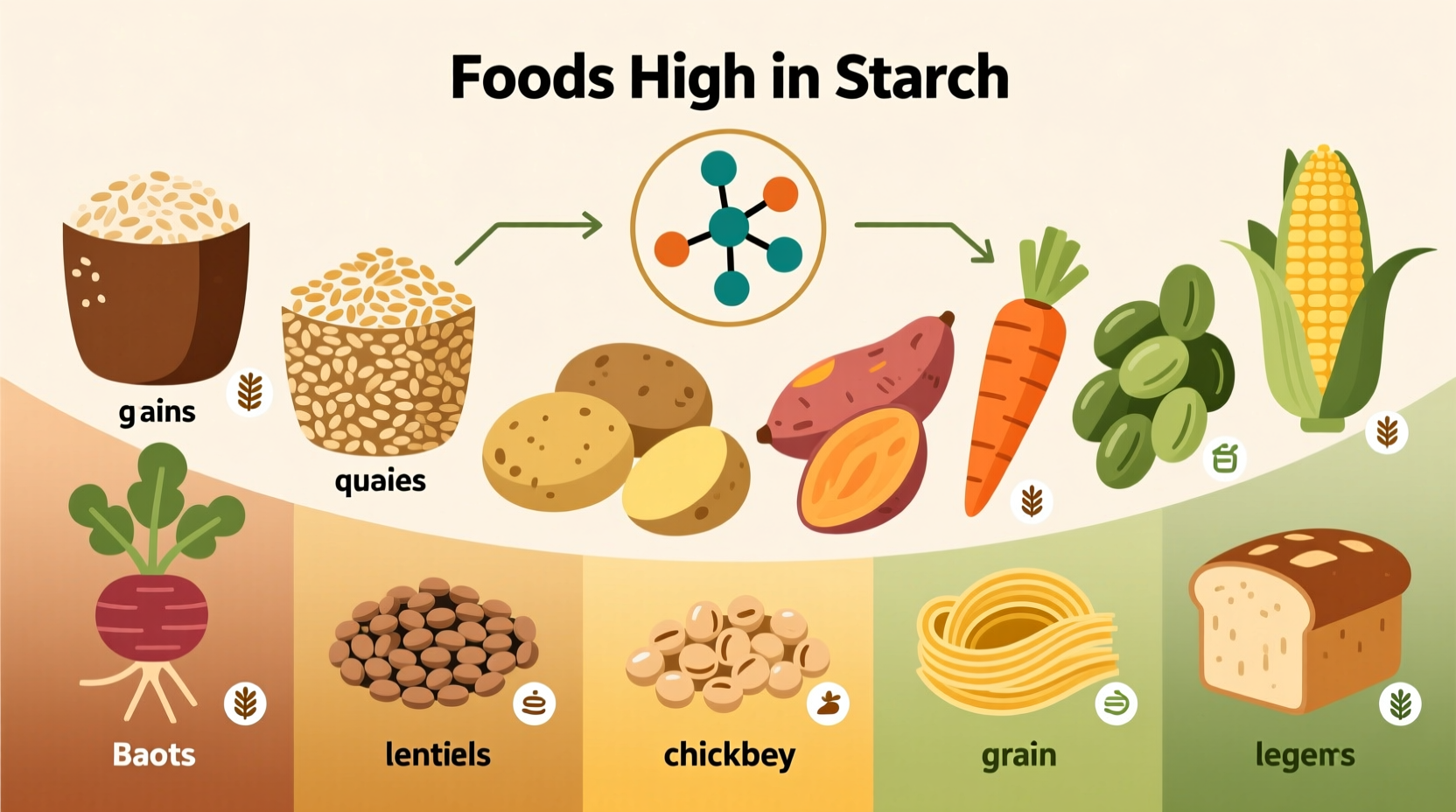Understanding which foods contain starch helps with dietary planning, blood sugar management, and making informed nutrition choices. Whether you're managing diabetes, following a specific diet, or simply curious about your food, knowing starch sources empowers you to make better decisions for your health.
What Exactly Is Starch and Why Should You Care?
Starch is a complex carbohydrate made of glucose molecules linked together. It serves as plants' energy storage system and becomes our energy source when we consume starchy foods. Unlike simple sugars that cause rapid blood sugar spikes, starch digests more slowly—though the rate varies significantly based on food type and preparation.
Knowing starch content matters because:
- It affects blood sugar control for people with diabetes
- It influences satiety and weight management
- It determines suitability for specific diets (keto, low-carb, etc.)
- It impacts cooking techniques and recipe success
Top Starchy Foods by Category
Not all starchy foods are created equal. Here's a breakdown of common starch sources with their approximate starch content:
| Food Category | Common Examples | Starch Content (per 100g) | Key Nutritional Notes |
|---|---|---|---|
| Grains | Rice, wheat, oats, barley, corn | 70-80g | Whole grains provide fiber, B vitamins; refined grains lose nutrients during processing |
| Root Vegetables | Potatoes, sweet potatoes, yams, cassava | 15-25g | Higher in vitamins and fiber than refined grains; sweet potatoes have more beta-carotene |
| Legumes | Beans, lentils, chickpeas, peas | 20-40g | Excellent protein-fiber-starch combination; lower glycemic impact than most grains |
| Other Starchy Foods | Corn, plantains, taro, green bananas | 15-35g | Often overlooked starch sources with unique nutritional profiles |
Data source: USDA FoodData Central
How Cooking Methods Transform Starch Content
The way you prepare starchy foods dramatically affects their nutritional impact. This timeline shows how cooking changes starch structure:
| Cooking Method | Starch Transformation | Glycemic Impact | Practical Tip |
|---|---|---|---|
| Raw | Resistant starch highest | Lowest blood sugar impact | Green bananas contain resistant starch; hard to digest for some |
| Cooked & cooled | Resistant starch increases by 50-60% | Much lower blood sugar spike | Cool potatoes/pasta before eating for lower glycemic impact |
| Freshly cooked | Most digestible starch | Highest blood sugar impact | Pair with protein/fat to slow digestion |
| Processed/refined | Starch easily converted to sugar | Very high blood sugar impact | Choose whole food starches over refined products when possible |
According to research published in the Journal of Nutrition and Metabolism, cooling cooked starchy foods increases resistant starch content by 50-60%, significantly reducing their glycemic impact compared to when served hot.

Practical Applications for Different Dietary Needs
Your relationship with starchy foods should align with your health goals. Here's how different groups can approach them:
For Blood Sugar Management
If you're managing diabetes or insulin resistance, focus on:
- Legumes as your primary starch source (lower glycemic impact)
- Cooling starchy foods before consumption
- Pairing starches with protein and healthy fats
- Choosing whole, unprocessed starch sources over refined options
The American Diabetes Association recommends including appropriate portions of starchy vegetables and whole grains in balanced meals rather than eliminating them completely.
For Weight Management
Starchy foods aren't inherently fattening—they become problematic when consumed in excess or in highly processed forms. Smart strategies include:
- Measuring portions (1/2 cup cooked grains or starch equals one serving)
- Choosing high-fiber starches that promote fullness
- Being mindful of added fats (butter on potatoes, oil in fried rice)
- Opting for resistant starch sources which may support metabolism
For Active Individuals and Athletes
Starchy foods provide valuable energy for physical activity. Time your intake strategically:
- Consume higher-starch meals 2-3 hours before intense activity
- Choose easily digestible starches pre-workout (bananas, oats)
- Include starch in post-workout meals to replenish glycogen
- Balance with protein for optimal recovery
Common Misconceptions About Starchy Foods
Several myths persist about starchy foods that deserve clarification:
"All starches are bad for you"
This oversimplification ignores the nutritional value of whole food starch sources. Legumes provide protein and fiber, sweet potatoes offer vitamin A, and whole grains deliver B vitamins. The problem lies with highly processed starches, not starch itself.
"Starchy vegetables aren't nutritious"
Potatoes contain vitamin C, potassium, and B6. Sweet potatoes are rich in beta-carotene. When prepared without excessive fats, these foods contribute valuable nutrients to your diet.
"You should eliminate starches for weight loss"
Sustainable weight management focuses on portion control and food quality rather than elimination. Completely removing starches often leads to nutrient deficiencies and unsustainable eating patterns.
How to Make Smarter Starchy Food Choices
Follow these practical guidelines when incorporating starchy foods into your diet:
- Choose whole food sources over processed options
- Measure portions rather than eating straight from the package
- Cool cooked starches when possible to increase resistant starch
- Pair with protein and healthy fats to moderate blood sugar response
- Rotate different starch sources to maximize nutrient diversity
- Consider your activity level when determining appropriate portions
Remember that individual responses to starches vary. Some people tolerate potatoes well while others do better with legumes. Pay attention to how your body responds and adjust accordingly.











 浙公网安备
33010002000092号
浙公网安备
33010002000092号 浙B2-20120091-4
浙B2-20120091-4